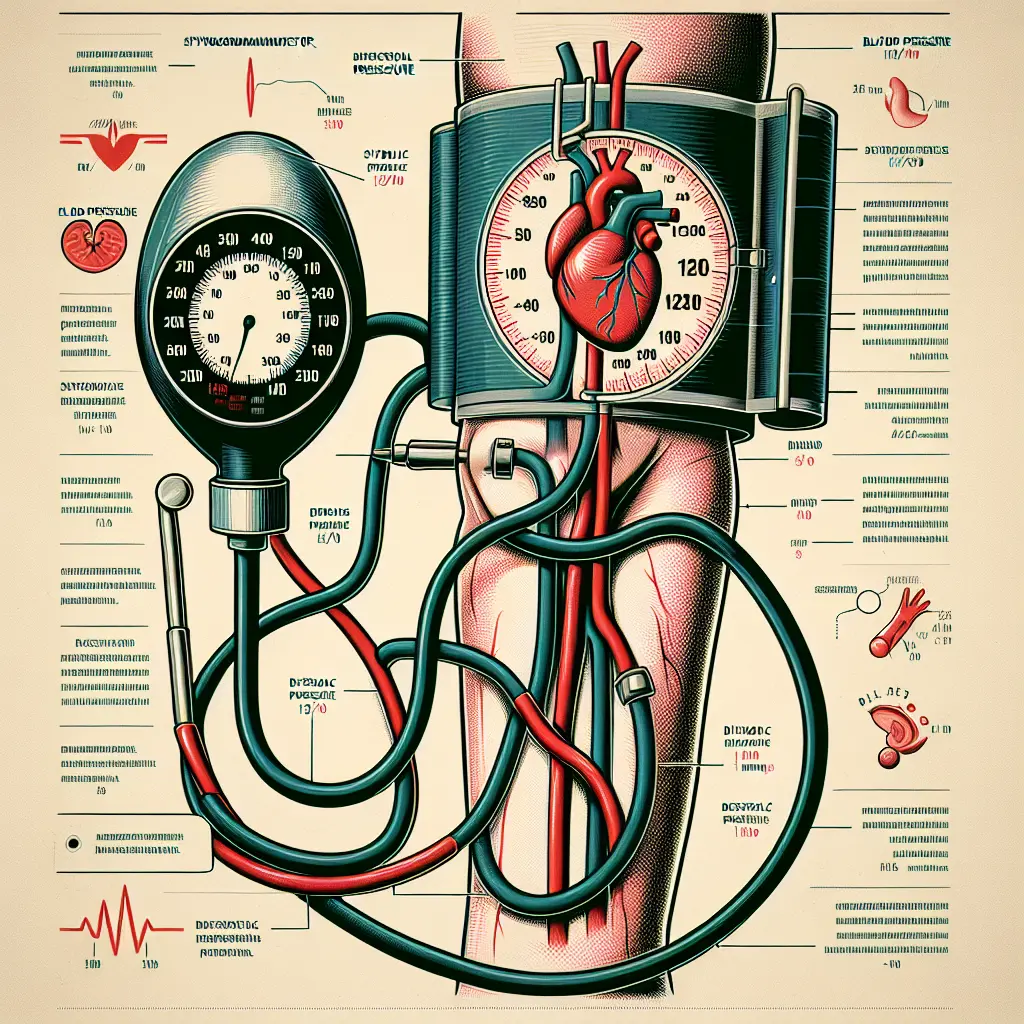Blood pressure is a vital sign that provides crucial information about our cardiovascular health. Understanding the difference between systolic and diastolic blood pressure is essential for maintaining overall well-being and preventing potential health complications. This comprehensive article will delve into the intricacies of blood pressure measurements, their significance, and practical advice for managing your cardiovascular health.
Blood pressure is the force exerted by circulating blood against the walls of the body’s arteries. It is measured using two numbers: systolic and diastolic pressure.
Systolic blood pressure is the higher number in a blood pressure reading. It represents the pressure in your arteries when your heart contracts and pumps blood out. This measurement indicates how hard your heart is working to circulate blood throughout your body.
Diastolic blood pressure is the lower number in a blood pressure reading. It measures the pressure in your arteries when your heart is at rest between beats. This value reflects the resistance to blood flow in the blood vessels.

While both numbers are significant, research has shown that systolic blood pressure is the best way to predict future cardiovascular events and death, regardless of age. However, diastolic blood pressure remains an important indicator, especially for younger individuals.
For people under 50, diastolic blood pressure readings provide additional prognostic information. As we age, our arteries tend to become stiffer, leading to a natural increase in systolic blood pressure. This is why systolic pressure often receives more attention in older adults.
Blood pressure is typically expressed as systolic pressure over diastolic pressure, measured in millimeters of mercury (mmHg). For example, a reading of 120/80 mmHg is considered normal for adults.
| Category | Systolic (mmHg) | Diastolic (mmHg) |
|---|---|---|
| Normal | Less than 120 | Less than 80 |
| Elevated | 120-129 | Less than 80 |
| Stage 1 Hypertension | 130-139 | 80-89 |
| Stage 2 Hypertension | 140 or higher | 90 or higher |
| Hypertensive Crisis | Higher than 180 | Higher than 120 |
It’s important to note that according to the 2017 American Heart Association guidelines, stage one hypertension is defined as a systolic blood pressure of 130-139 mmHg with a diastolic pressure of 80-89 mmHg.
High blood pressure, or hypertension, is often called the “silent killer” because it typically has no symptoms but can lead to serious health complications if left untreated.
Elevated blood pressure significantly increases the risk of:
The difference between systolic and diastolic pressure, known as pulse pressure, is also a critical factor. An elevated pulse pressure has been found to be a stronger independent predictor of cardiovascular events, especially in older populations, than systolic, diastolic, or mean arterial pressure alone.
Accurate blood pressure measurement is crucial for proper diagnosis and management of hypertension.
Recent advancements have led to the development of cuffless blood pressure measurement devices:
| Method | Advantages | Disadvantages |
|---|---|---|
| Auscultatory | Gold standard, highly accurate | Requires training, prone to human error |
| Oscillometric | Automated, easy to use | May be less accurate in certain populations |
| PPG-based | Cuffless, continuous monitoring | Relatively new technology, accuracy still being validated |
| Wearable Devices | Convenient, allows frequent monitoring | Accuracy can vary, may require calibration |
Several factors can influence blood pressure readings:
Maintaining healthy blood pressure levels is crucial for overall cardiovascular health. Here are some effective strategies:

In some cases, lifestyle changes alone may not be sufficient to control blood pressure. Your healthcare provider may prescribe medications such as:
It’s crucial to take medications as prescribed and not discontinue them without consulting your doctor.
Regular home monitoring can help you track your blood pressure and the effectiveness of your treatment plan. Follow these tips for accurate readings:
Advancements in technology are paving the way for more convenient and continuous blood pressure monitoring. Cuffless devices, such as the photoplethysmography-based BB-613WP, have shown promising results in clinical studies, demonstrating high agreement and reliability levels compared to traditional methods.
These innovations may revolutionize how we monitor and manage blood pressure, allowing for more frequent measurements and earlier detection of hypertension.
Understanding the difference between systolic and diastolic blood pressure is crucial for maintaining cardiovascular health. While systolic pressure is generally considered a stronger predictor of cardiovascular risk, especially in older adults, both measurements provide valuable information about your heart health.
Regular monitoring, adopting a heart-healthy lifestyle, and working closely with your healthcare provider are key to managing your blood pressure effectively. By taking proactive steps to control your blood pressure, you can significantly reduce your risk of serious health complications and improve your overall quality of life.
Remember, high blood pressure is often asymptomatic, so regular check-ups and home monitoring are essential. If you have concerns about your blood pressure or are at risk for hypertension, consult with your healthcare provider to develop a personalized management plan.